History of the Netherlands (before 800 BC)
The early history of the area now in the Netherlands is largely shaped by the sea and the rivers that regularly move beneath it. The oldest human (Neanderthal) trails have been found in the highlands, near Maastricht, from what is believed to be around 250,000 13,000 years ago. Towards the end of the ice age, the nomadic culture of the Upper Paleolithic Hamburg (10,000-11,200 BC) hunted deer in the area using spears, but later the Ahrensburg culture (9500-8000 BC) used bow and arrow. From nations such as the Mesolithic Maglemosian (XNUMX BC) the world's oldest boat was found in Drenthe.

The late native Mesolithic hunters from the Swissterbant culture (5600 BC) were closely related to the Ertebvianlle culture in southern Scandinavia and were closely associated with rivers and open waters. Between 4800 and 4500 BC. the people of Swifterbant began to copy livestock from the nearby Linar pottery culture, and between 4300 and 4000 BC. was an agricultural practice. The Funnelbeaker tradition (4300-2800 BC), associated with the Swifterbant tradition, forms dolls, monuments of large stones found in Drenthe. There was a rapid and smooth transition from the farming tradition to the funnel to the pan-European pastoralist tradition (2950 BC). To the southwest, the Seine-Oise-Marne tradition survived - related to the Vlaardingen tradition (2600 BC), a well-known ancient hunter-gatherer tradition - the Neolithic, followed by the Corded Ware Culture.
According to the subsequent Bell Beaker tradition (2700-20000 BC), many origins were exported, mainly to the Iberian Peninsula, the Netherlands and Central Europe. They later introduced steelworks with copper, gold and copper and opened international trade routes that had never been seen before, which is reflected in the discovery of copper products, as iron is rare in Dutch soil. The many archaeological finds in Drenthe suggest that it was a trading place in the Bronze Age (2000-800 BC). The Bell Beaker culture grew locally to the barbed wire cup culture (2100-1800 BC) and later the Elp culture (1800-800 BC), the archaeological tradition of the Middle Bronze Age with fine pottery. low as marker. The first phase of the Elp process was characterized by tumuli (1800-1200 BC) which were largely bound to modern tissues in northern Germany and Scandinavia and were apparently related to the Tumulus culture in Central Europe. The next phase was to burn the dead and bury the ashes in tombs, according to the Urnfield tradition (1200-800 BC). The southern region was ruled by a related Hilversum culture (1800-800 BC), which seemed to have found a connection with Britain's former barbed wire cup culture.
History
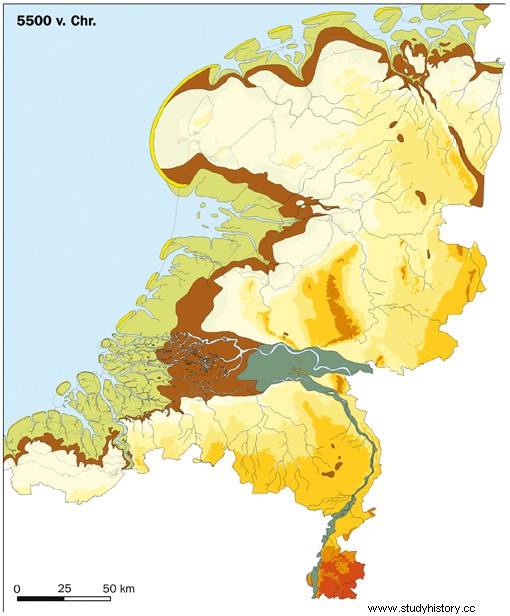
The Netherlands is the most common country in Western Europe and partly in the Caribbean. The largest country in the four states of the Netherlands. In Europe, the Netherlands has twelve provinces, bordering Germany to the east, Belgium to the south and the North Sea to the northwest, and the territories of the North Sea and these countries and the United Kingdom. In the Caribbean, it consists of three special municipalities:the islands of Bonaire, Sint Eustatius and Saba. The country's official language is Dutch, with West Frisian as the second official language in the province of Friesland, and English and Papiamento as the second official language in the Caribbean, the Netherlands. Dutch Low Saxon and Limburgish are respected regional languages (spoken East and Southeast respectively), while Sinte Romani and Yiddish are well-known non-native languages.
The four largest cities in the Netherlands are Amsterdam, Rotterdam, The Hague and Utrecht. Amsterdam is a densely populated city with a specific capital, while The Hague has its seat before the state's general, cabinet and supreme court. The Port of Rotterdam is the busiest port in Europe, and is the busiest in the world except East Asia and Southeast Asia, after only China and Singapore. Amsterdam Airport Schiphol is the busiest airport in the Netherlands, and the third busiest in Europe. The country is the founder of the EU, the eurozone, the G10, NATO, the OECD and the WTO, as well as part of the Schengen area and the trilateral Benelux Union. It has many governmental organizations and international courts, many of which are located in the heart of The Hague, the so-called 'legal capital of the world'.
The Netherlands literally means "low land" in terms of low altitude and spatial study, which is only about 50% of the land area more than one meter (3 ft 3 inches) above sea level, and about 26% falls below the coast. Many coastal areas, known as polders, are the result of land reform dating back to the 14th century. In combination or informally, the Netherlands is sometimes referred to as pars pro toto Holland. With a population of 17.4 million, everyone lives in an area of 41,800 square kilometers - a land area of 16,100 square kilometers - the Netherlands is 33,500. most populous country in the world and the second largest in the world, the most populous in the EU, with a population of 12,900 square kilometers (12 / sqm). However, it is the second largest supplier in the world of food and agricultural products due to fertile soil, low climate, intensive agriculture and innovation.
The Netherlands has been a parliamentary monarchy with a unified structure since 1848. The country has a history of anointing and a long history of social tolerance, since it has officially suspended, prostitution and murder, and maintained an open drug policy. The Netherlands abolished the death penalty in the Civil War in 1870, although it was not abolished until a new constitution was approved in 1983. The Netherlands allowed women to take up the profession in 1919, before the world's first gay marriage was legalized in 2001. The varied market economy had the highest eleven per capita income worldwide. The Netherlands is among the world's best companies for media freedom, economic freedom, human growth and quality of life and happiness. In 2019, it was ranked tenth in the Human Development Index and fifth in the 2019 World Happiness Index.
Middle Ages
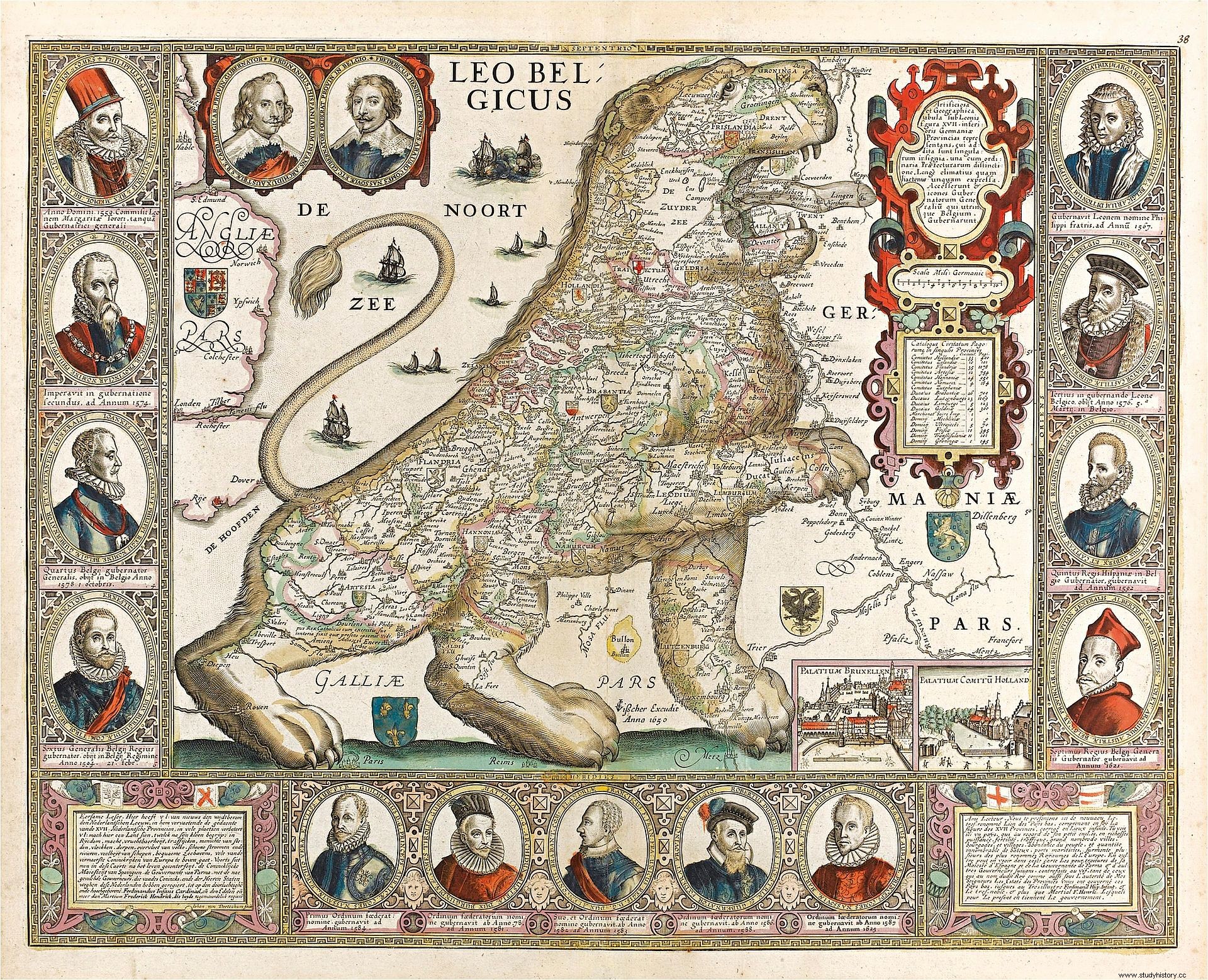
After the fall of the Roman government in the area, the Franks expanded their territories to more empires. In the 490s, Clovis I had conquered and occupied the southern part of the Netherlands in one Frankish empire, and from there he continued the conquest of Gaul. During this expansion, the Franks migrated southward eventually using the local vulgar Latin. The increase in cultural diversity grew as the Franks remained in their first northern country (eg the Netherlands in South Flanders) and continued to speak Old Frankish, which in the ninth century converted to Old Low Franconian or Old Dutch. Thus, there was a border between Dutch and French.
North of the Franks the climate improved, and during the migration period the Saxons, the closely related angles, jutes and Frisian landscaped coastal lands. Many migrated to England and became known as Anglo - Saxons, but those who remained were to be called Frisians and their language as Frisians, after the Frisian world. Frisian was spoken throughout the south coast of the North Sea, and it is still the most closely related English language among the living languages of the European continent. In the seventh century, the Frisian Empire (650-734) under King Aldegisel and King Redbad emerged with Utrecht as its center of power, while Dorestad was a thriving commercial center. Between 600 and around 719 cities were often at war between the Frisians and the Franks. In 734, the Battle of Boarn was defeated after several battles. With the approval of the Franks, the Anglo-Saxon missionary Willibrord converted Frisians to Christianity. He founded the archdiocese of Utrecht and became the bishop of the Frisians. However, Boniface's successor was murdered by the Frisians in Dokkum, in 754.
The Frankish Carolingian Empire imitated itself after the Roman Empire and dominated large parts of Western Europe. In 843, however, it was divided into three parts - Eastern, Central and Western France. Most of today's Netherlands became part of Central France, which was a weak and divided state and undermined by its powerful neighbors. It had territories from Frisia in the north to the Italian Empire in the south. Around the year 850, Lothair I in Central France recognized Viking Rorik of Dorestad who rules over large parts of Phrygia. When the Middle East was divided into 855, the northern Alps moved to Lothair II and was later called Lotharingia. After his death in 869, Lotharingia was divided into Upper and Lower Lotharingia, the last part of the Commonwealth, which became part of Eastern France in 870, but dominated by the Vikings, invading the unprotected Frisian and Franconian coastal towns and rivers. P>
High Middle Ages
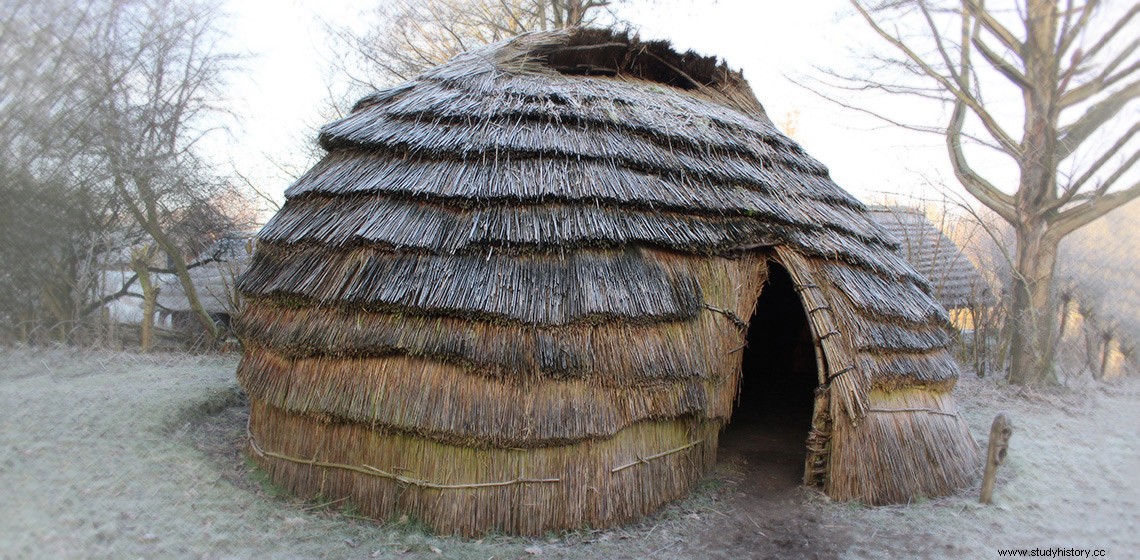
The Holy Roman Empire (the country next to Eastern France and then Lotharingia) dominated the southern hemisphere in the 10th and 11th centuries, but failed to maintain political unity. Powerful local dignitaries transformed cities, regions, and flowers into independent states that felt no obligation to the emperor. Holland, Hainaut, Flanders, Gelre, Brabant and Utrecht were in a state of constant war or confusing human unions. Language and culture The majority of the people who lived in the Dutch region were originally Frisians. As the Frankish territory continued from Flanders and Brabant, the area soon became old Low Franconian (or old Dutch). The remnants of the North Frisian (now Friesland and Groningen) continued to maintain their independence and established their own institutions (collectively called "Frisian independence"), which did not require the inclusion of a monarchy system.
Around the year 1000 AD, as a result of several agricultural developments, the economy began to grow rapidly, and high productivity allowed workers to cultivate more land or become traders. Cities grew up around monasteries and castles, and the middle class of mercantile began to grow in these urban areas, especially in Flanders and later in Brabant. Wealthy cities began to buy certain privileges from the king. Doing so meant that Bruges and Antwerp became independent republics and eventually became the most important cities and ports in Europe.
Around 1100 AD. Farmers in Flanders and Utrecht began to cultivate and cultivate wetlands in the western part of the Netherlands, which made the county of Holland a power plant. The title of Count of Holland was won in Hook and Cod Wars (Dutch:Hoekse en Kabeljauwse twist) between 1350 and 1490. The Cod team had progressive cities, while the Hook group had respected members. The dignitaries invited Governor Philip Okuhle of Burgundy - also a county of Flanders - to conquer Holland.
Geography &Geology
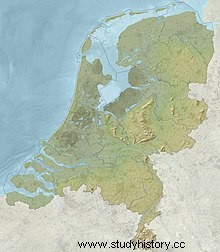
According to the Central Bureau of Statistics, the Netherlands in Europe has a total area of 41,545 km2, including bodies of water; with an area of 16,041 km33,481 (2 sqm). Caribbean Netherlands has a total area of 12,927 km328 (2 sqm). Between 127 ° and 50 ° N, and 54 ° and 3 ° E. The Netherlands is geographically low compared to the sea and is considered a flat country, with about 8% of its area and 26% of the population below sea level, and only about 21% of the land area. one meter above sea level. Part of the European country is mostly flat, with the exception of the hills to the southeast, up to a height of no more than 50 meters, and some low mountains in the central parts.
The present Netherlands was formed as a result of the confluence of four large rivers and the influence of the North Sea. The Netherlands is largely composed of marine, coastal and Aeolian creatures in the Pleistocene Ice Age and Middle Ice Age. Almost the entire western Netherlands consists of the river Rhine-Meuse, but human intervention has profoundly changed the natural processes at work. Most of the western part of the Netherlands is under the coast due to the human process of converting standing bodies of water into a tool polder.
flood
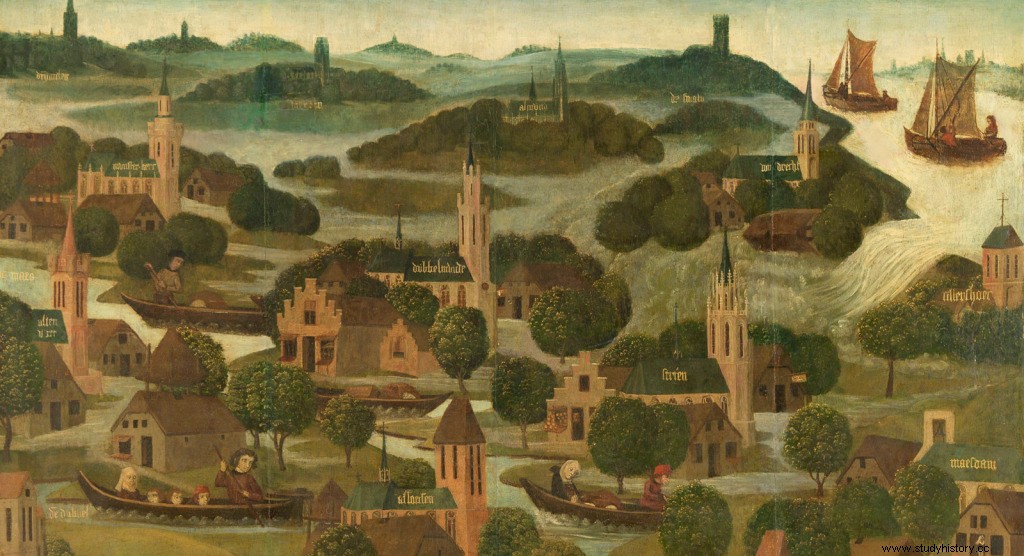
Over the centuries, the Dutch coast has changed dramatically as a result of natural disasters and human intervention.
December 14, 1287 The flood of St. The flood of St. Elizabeth in 1421 and the ruthless leadership after it destroyed the recently restored polder, and flooded 28 kilometers (28 sqm) of floodplains in Biesbosch in the south-central part. The great North Sea flood in early February 1953 caused many canals in the southwest of the Netherlands; more than 1,800 people drowned in the floodwaters. The Dutch government then launched a major program, "Delta Works", to protect the country from the coming flood, which was completed in more than three decades.
To prevent flooding, a series of waterproofing systems were developed. In the first millennium AD. villages and agricultural fields were built on man-made hills called torches. Later, these bones were connected by canals. In the 12th century, local agencies called “waterschappen” (“water boards”) or “hoogheemraadschappen” (“top local councils”) first appeared, their function was to maintain water quality and protect the region from floods; these structures continue to exist. When the soil level drops, the dikes necessarily grow and are consolidated into an integrated system. In the 13th century, wind turbines were used to pump water out of the seabed. Fans were later used to clear lakes and form famous polders.
